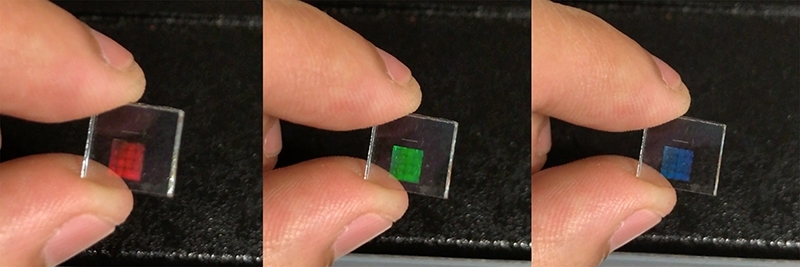Nanoscale assemblies to defy counterfeiting
Anti-counterfeiting technology could get a new lease of life from a nanoscale assembly method called electrophoretic deposition (EPD), which is said to achieve a high degree of control and scalability.

Scientists at the ARC Centre of Excellence in Exciton Science at the University of Melbourne, Australia, have used the EPD technique to arrange tiny gold rods in horizontal and vertical patterns and in numbers large enough for practical use. The vertical nanorod is said to “provide another dimension of freedom for nanostructure construction”.
The rods are arranged to generate a variety of colours, which change according to the angle that they are viewed. A printed pattern using a unique nanoparticle construction could therefore be applied to show a specific colour or colour changes when chemicals react with the particles. Applied to a banknote or passport, cashiers or customs agents could spot counterfeits.
The colour change in the presence of chemicals also means the technique can be applied to warn of dangerous levels of carbon monoxide and other gases.
Heyou Zhang, PhD candidate at the University, explains that he wants to use nanoparticles in a similar way to how builders construct houses. “At the nanometre scale, you can’t move nanoparticles yourself,” he explains. “They are invisible. You need to use a method to drive or push the particle into a certain position.”
This is where EPD comes in. The technique applies an electric field of a certain strength to the materials and uses the separation of positive and negative changes to push the rods into place.
“You have a positive potential and, if the particle is negative, they attract each other. If I have the positive potential on the side of a wall and I have some holes on the wall, the particle can only be attracted to those holes.”
Using the technique, the researchers have built collections of over one million nanorods per square millimetre, in patterns of their choosing. Optical microscopes record the EPD process and observe the particles’ movements, characterising the assembled nanoparticle arrays.
The final properties, especially the colour of the array, are highly dependent on (1) the type, size and aspect ratio of each of the nanorods, (2) orientation, inter-particle distance, pattern of the array, and (3) the angle and polarisation when examined.
The research team will next explore the abilities of the EPD assembly method as a universal method for nanomaterials other than gold.







